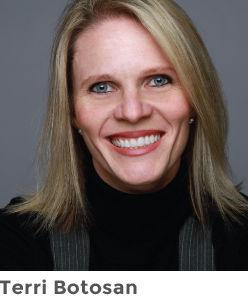Contracts between carriers and most managing general agencies (MGAs) are under review, after supervision guidelines from the Canadian Life and Health Insurance Association (CLHIA) came into effect earlier this year.In particular, CLHIA’s Guideline G18, affecting insurer-MGA relationships, and Guideline G8 which stipulates and outlines the responsibility companies have to screen, monitor and report advisor activity, are the most significant catalysts for the widespread changes being made to contracts in the industry today.
In response, Michael Williams, Bridgeforce Financial Group partner, and president of the Canadian Association of Independent Life Brokerage Agencies (CAILBA), announced the association is forming a “president’s advisory council” to review all contracts being negotiated between MGA distributors and insurance carriers.
“Right now, its main function is to negotiate fair MGA contracts with insurance carriers,” he says.
The effort is similar, albeit a more formal iteration, of the contract review process CAILBA undertook while Hub Financial president, Terri Botosan served as CAILBA’s president, back in 2008.
At the time, MGAs worked to review their contractual obligations, as they began to realize the extent to which they were liable or responsible for activities that were generally beyond their control. In some cases, the contracts in force were more than a decade old, signed at a time when ‘MGA’ could easily have referred to a single producer, or an entire distribution company.
Even before the CLHIA came out with its most recent round of advisor screening guidelines (Guideline G8), the oversight of independent producers has long been a responsibility pushed back and forth between carriers and MGAs. Typical carrier contracts, for example, would require MGAs to monitor and control independent sales people, advisors, as if they were in-house staff.
“We all know that we’re not sitting at the kitchen table with the advisor,” Botosan says, in describing the effort to have contracts modified to reflect the reality of the situation. “Let’s understand that these are independent business people, and that we only have so much influence.”
In 2008, she adds that Hub was one of the few MGAs with an established legal team. It was about this time that a number of the industry’s small producers, meanwhile, began making plans to retire, or to be acquired by competitors.
“We volunteered our legal team to review all the contracts, and point out what clauses might be of concern to MGAs. There were a lot of contracts that were very out dated.”
In managing this earlier effort, she says carrier responses varied widely – while some insurance manufacturers involved engaged and cooperated completely with the effort, others ignored the process altogether, “and everything in between.”
New industry reality
Today, some very different discussions are underway between the industry’s stakeholders, as they attempt to negotiate contracts that will both reflect the new industry reality, and also stand the test of time going forward.
Although each MGA participating in the new committee already has its own internal review processes and members of their compliance staff sitting on CAILBA’s existing compliance review committee, forming the president’s group to provide business input became necessary as new carrier contracts began coming under scrutiny.
 “They were starting to talk about carrier contracts, without a lot of business input,” Botosan says of CAILBA’s compliance committee efforts.
“They were starting to talk about carrier contracts, without a lot of business input,” Botosan says of CAILBA’s compliance committee efforts.
Although the committee did a lot of work to review CLHIA guidelines, when the time came to work on and communicate about carrier contracts, however, the need for a president’s committee became apparent, as each executive began receiving information from their own compliance staff members, from each other, and from carriers directly.
“It was just getting unwieldy,” she adds. “There has been so much change in regulation, so much change in guidelines and expectations, that almost all carriers are redoing their contracts right now. The whole thing was just out of control,” she laughs.
“I think from the carrier’s perspective too,” she adds. “They’ll get nine comments from one company, 11 from us, and four from another company. Some (comments) might be the same, and some might be different.”
Williams, meanwhile, asserts the need for a president’s committee, saying an MGA compliance employee or the existing committee could review the contracts for compliance, but would generally not be equipped to understand the business owner’s point of view or legal obligations.
Mitigating risk
In explaining this, Botosan points out that a legal and compliance team’s primary objective is to ensure firms (carriers or MGAs, depending on who they represent) are protected from risk, 100 per cent of the time.
“That’s what they’re supposed to do. They’re supposed to say to me, or to whoever they report to, ‘This is a risk, and something could go wrong.’”
“We can protect ourselves from all risks 100 per cent of the time, but we’re not going to do any business that way,” she adds. The job, then, is to decide which risks can be mitigated, or to consciously make decisions about which risks the firm can assume. “You’ve got to be able to say ‘Yes, this is a risk, but I can protect against it another way’, or ‘This is a risk I’m willing to take on.’”
Similarly, some discussions about contractual obligations will result in management agreeing that certain clauses will force additional work or responsibilities onto the firm, “but they’re reasonable expectations, and it’s something we’ll need to do,” she adds. “I think that’s the difference between the compliance perspective and the business perspective.”
Although instances remain where clauses of contention still need to be shunted back and forth until concerns are properly acknowledged, those in such discussions say dialogue between the two industry segments remains respectful, business like and friendly.
Much of this is no doubt helped by the fact MGAs today are the industry’s biggest producers or distributors of life and health insurance in Canada. According to Investor Economics, managing general agencies today enable 40 per cent of the industry’s life product sales, and 42 per cent of the industry’s segregated fund sales, overall.
“We both need each other,” agrees Rick Forchuk, Empire Life’s special advisor, distribution practices. “Carriers need the MGA to distribute product, and the MGA needs carriers to have product. We both bring certain things to the table.”
Compared to discussions and the relationship between carriers and MGAs in years past, both Botosan and Forchuk agree the relationship has evolved significantly, as well.
“What’s evolved more than any single thing is the degree of sophistication in these MGA organizations,” Forchuk says. “They have grown. They have acquired other MGAs, they have acquired knowledge and they have acquired some very significant talent. Their sophistication, and their level of knowledge, I would say, is substantially greater than it was five or 10 years ago. Ours too. It’s an evolving business.”
“The relationship evolves too,” he adds. “The real test of character and the real test of relationship is adversity and difficulty. If anything today, (contract negotiations) bring more clarity, a greater level of sophistication and a greater level of intelligence to the table. They’re higher-level discussions, and they’re higher-level relationships.”




